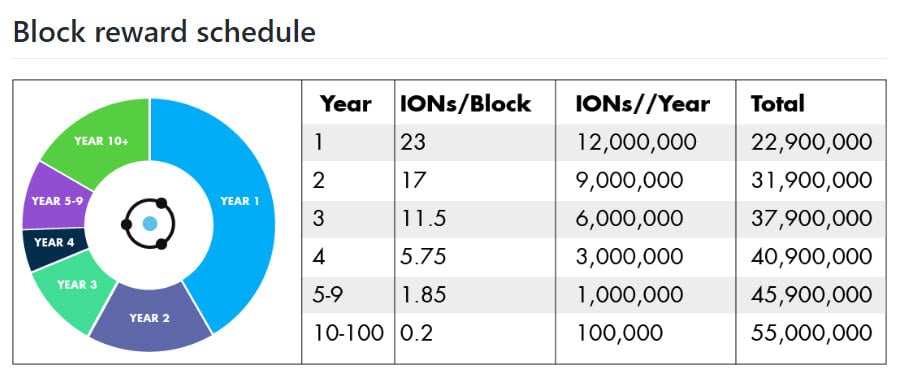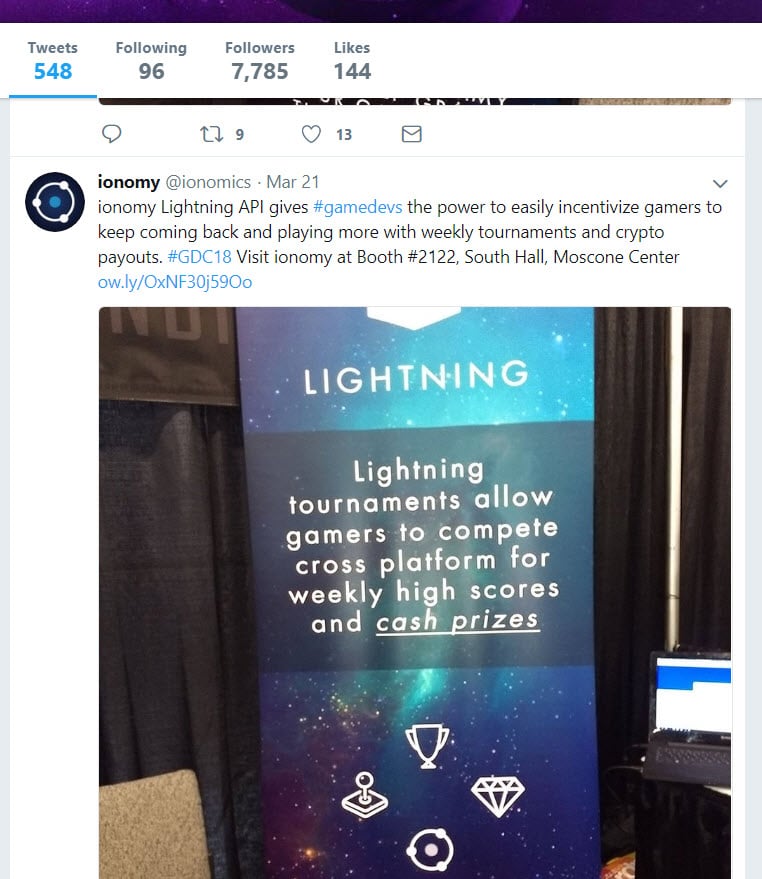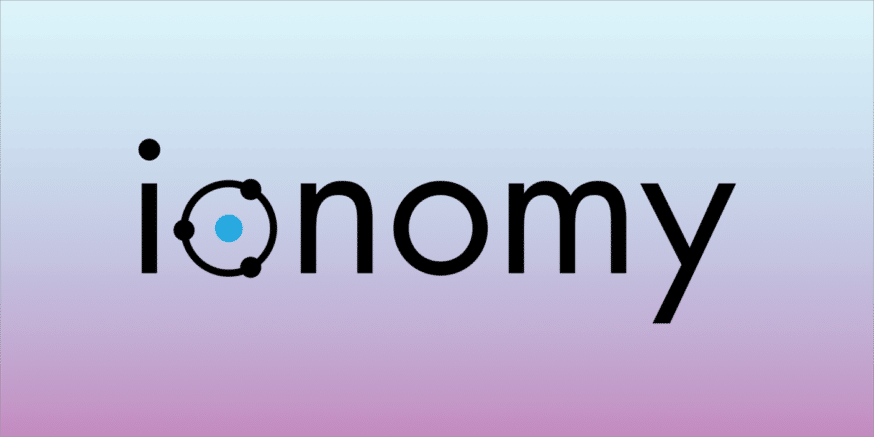ION is the cryptocurrency of the Ionomy gaming community. Their goal is to establish a “thriving ecosystem” that is centered on gaming and digital goods paid for with ION. If you’re thinking that sounds awfully familiar (Enjin Coin, GameCredits), hold up. There are certain features that differentiate ION from other gaming coins.
For one, ION rewards network participation via static Proof-of-Stake (PoS) rather than Proof-of-Work (PoW) or regular Proof-of-Stake (more on that in a moment).
In this guide, we get into all the essential details about ION, including:
- How Does It Work?
- Sustainability
- Supply
- About ION
- Where to Buy and Store ION
- Conclusion
- Additional Resources
How Does It Work?
Rather than rewarding for “coin age” (how long you’ve held the tokens), ION rewards for “connectivity age” (length of activity on the network). This is meant to eliminate abuse from people who aren’t actively contributing to the network. The static PoS system rewards users as they participate and play the games. The rewards are proportional to the amount of time spent and the “work” each active node contributes.
The idea behind this is to avoid centralization (large companies owning the most tokens and accruing value for their age) and encourage network health, i.e. more participation leads to a stronger community of incentivized gamers.
Sustainability
If you want to take a deep dive into the white paper, you can check it out here. But the basic premise is that the Bitcoin system of Proof-of-Work (PoW) is no longer viable. And that the Ethereum Proof-of-Stake (PoS) isn’t inclusive or incentive-inducing enough.
Proof-of-Work Vs Proof-of-Stake
The Ionomy team talks about Bitcoin’s rose-tinted past and how miners could maintain a decentralized ledger just by using a laptop. Now, however, the Bitcoin network relies on a massive amount of computational power that is disastrous for the environment. It also leads to centralization since the mining is carried out by large corporations with behemoth mining farms.
Ionomy rejects the Proof-of-Work system in favor of Proof-of-Stake that depends upon a low energy distributed network. However, they take it one step further by making it static. Essentially, PoS relies on coin accumulation rather than computational power to secure the network.
So, early models were based on coin age (how long coins were held in a wallet) and coin weight (how many there were in the wallet). But both of these fail to encourage network participation.
There are other problems with this system as well. For example, what’s to stop crypto holders from depositing a whole bunch of tokens into a wallet, taking it offline, accruing coin age, and bringing it back online to reap the rewards?
Moreover, ION argues that large users, such as exchanges, can also HODL coins without participating, which damages the integrity of the network. It also drives down the market value of the coin, since they only connect to sell off large amounts.
Static Proof-of-Stake
ION uses static Proof-of-Stake to eliminate the above problems. The reward is “static” because it’s always the same (50 percent of the block reward). This gives users the “robust, fast, and secure network” they want and deserve. The coin weight still matters, so, the more you hold, the more you earn, but connectivity age is now a key factor.
So, you get rewarded for the duration of time that your wallet is active on the network. Coin age is also removed from the model and users can stake coins by being active on the network and through the amount of ION they hold.
Supply
There’s a total supply of 55 million IONs with a total of 27,505,100 million IONs registered on Coinmarketcap right now (21,605,100 IONs of which are in circulation).
3.4 million IONs are allocated to Ionomy to be distributed as incentives through gaming apps designed and 2.5 million are reserved to pay bounties for coin development.
The rest of the coins will be generated through Proof-of-Stake.
Block Rewards
You can check out the block rewards schedule below:

In the first year, they’ll be releasing 23 IONs per block and then reducing it every year after that following the schedule. Bitcoin also has a finite supply and started by rewarded 50 BTC per block, and reducing the amount over time.
It’s nice to hear about the theory of not simply rewarding the heavy-weight cryptocurrency holders. However, if you check out the ION rich list, you’ll see that almost 40 percent of tokens are held by the same 10 addresses. Which sounds a little as if the ION team are taking the largest rewards. Although we’re not pointing any fingers here.

About ION
Launched by Ionomy, a community for gamers and developers, ION is the cryptocurrency used to buy and sell within their site. Anyone can go to the site and create an account, and it’s actually pretty user-friendly. There’s a whole internal economy and ecosystem going on.
You can have an ION or BTC wallet, and you can buy right from their website rather than go on exchange. You can stake coins as well and also convert several cryptocurrencies into IONs, including Gnosis, DigiByte, Storj, Clams, Dash, Ether Classic, and a bunch of other altcoins.

For Gamers
Ionomy Studios has created games that incentivize users to play. The more they play, the more they earn. But to ensure that it doesn’t get boring, there are weekly tournaments, gamers can play against each other and win special prizes. If users buy in-game items with their ION, they get 50 percent off. Furthermore, they say that “cashing out to Bitcoin is easy on the multicurrency exchange.”
For Developers
Ionomy has a PWR-GRD that “makes it easy” for developers to earn while adding features to games. PWR-GRD offers that a full-service suite that helps developers make better games through options like crowdfunding, integrated advertising, and cash rewards. There is also a large social community to give feedback and encouragement.
In theory…
ION Has a Lot of Skeptics
The ION community doesn’t seem quite as impressed. In fact, just from checking out their comments on Bitcointalk, it seems that the overwhelming complaint is a lack of quality games.
One user writes, “Is ION still a gaming coin? If so, where the fuck are all the games?” And there are plenty of other comments that continue in the same vein.

In fact, simply playing Ionomy’s games, it’s fairly clear that they aren’t exactly Grand Theft Auto. There doesn’t seem to be much incentive to play other than racking up coins.
Moreover, criticism over their ICO was deafening, with many people accusing it of being a scam. Another possible red flag is that the Chief Strategist of Ionomy is Adam Matlack of Paycoin and GAWMiners scandalous fame.
And that rich list might not sit quite right for some people.
Trading History
Despite massive spikes in Bitcoin and other altcoins in 2017, the ION coin kept a pretty stable value throughout the first half of the year. Through the second half of last year, unsurprisingly the price ran up along with the bull run to reach an all-time high of just over $7 (~0.00048000 BTC) in January of 2018 before crashing back down to around $2.30 (~0.00024818 BTC).
We saw a price surge in March of 2018 to $4.88 (~0.00044103 BTC), which could have been due to the announcement of the Ionomy Lightning API for developers. But ION price has nosedived again and is currently valued at ~$1.13 (~0.00016014 BTC).

There doesn’t seem to be all that much to get excited about by ION right now except for the cheap price. The real gamechanger (get it?!) will come if they create a hit game on like Angry Birds or Grand Theft Auto, then the coin price could surge dramatically. Certainly, ION is not without potential and that alone makes this project worth keeping at least half an eye on.
Where to Buy and Store ION
There are a couple of exchanges on which you can buy ION. These include Bittrex and Upbit. But the main place to buy ION is directly on the website which rewards users for connectivity and for keeping their coins inside the ecosystem.
You can buy tokens with several altcoins as mentioned above, or with Bitcoin. But storing it in the Ionomy platform may feel a little unnerving if you’re worried about security issues.
Conclusion
The ION ICO received a barrage of scrutiny and criticism. There was a slew of negative press and community members calling it a scam. That may be noteworthy, although, “scam” is a term that’s become decidedly overused. One could argue that the definition of a scam is receiving nothing for your investment. However, with ION, you do get rewarded as you play and you can stake your own coins as well.
The team has put a lot of work in to redress their unfortunate start. Ionomy has built a great platform with a nice internal economy, and lots of options and features. But unfortunately, it seems as if the main product is lacking at the current time: the games available to play are bland at best.
For the time being, if it’s quality games you’re after, you’d perhaps be better off spending your money on a new Xbox. But if you’re looking into this coin as an investment, it’s just possible that a killer game or major partnership could bump the price. We’ll leave that up to your judgment.






